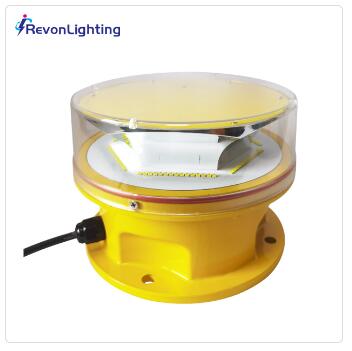Posted: 2024-05-14
LED obstruction lights are an essential component of aviation safety, designed to provide enhanced visibility and alert pilots to potential obstacles in their flight path. These lights utilize light-emitting diodes (LEDs) to ensure maximum brightness, long lifespan, and energy efficiency. In this article, we will explore the importance of LED obstruction lights, their benefits, and their role in advancing aviation safety.
Importance of LED Obstruction Lights:
LED obstruction lights play a crucial role in aviation safety as they provide increased visibility, especially during low-visibility conditions such as fog, rain, or darkness. These lights are primarily used to mark tall structures, such as communication towers, wind turbines, buildings, and bridges, to prevent collisions and ensure safe navigation for aircraft. LED obstruction lights serve as a visual warning system for pilots, enabling them to identify potential hazards in their flight path and take necessary precautions.
Benefits of LED Obstruction Lights:
Brightness: LED obstruction lights are known for their high-intensity brightness, making them easily visible from a distance. This ensures that pilots can detect potential obstacles and take appropriate action to avoid them.
Energy Efficiency: LED lights are highly energy-efficient compared to traditional lighting systems. They consume less power, resulting in reduced energy costs and a lower carbon footprint.

Long Lifespan: LED lights have a longer lifespan compared to traditional lighting sources, reducing the frequency of maintenance and replacement. This not only saves costs but also minimizes disruptions to aviation operations.
Durability: LED obstruction lights are designed to withstand harsh environmental conditions, including extreme temperatures, humidity, and vibrations. They are built to be durable and reliable, ensuring consistent performance even in challenging weather conditions.
Role in Advancing Aviation Safety:
LED obstruction lights have significantly advanced aviation safety by improving the visibility of tall structures and potential obstructions. The use of LED technology enhances the effectiveness of obstruction lighting systems, ensuring that pilots can easily identify and navigate around obstacles. LED lights are highly visible from long distances, even in adverse weather conditions, providing pilots with critical information to make informed decisions.
| 11 | 14 |
| 12 | 15 |
| 13 | 16 |
Regulations and Standards:
LED obstruction lights are subject to regulations and standards set by aviation authorities, such as the International Civil Aviation Organization (ICAO) and the Federal Aviation Administration (FAA). These regulations define the type, intensity, and placement requirements for obstruction lighting systems, ensuring uniformity and consistency in their implementation. Compliance with these regulations is crucial to maintaining effective lighting practices and ensuring aviation safety.
Conclusion:
LED obstruction lights have revolutionized aviation safety by providing enhanced visibility and alerting pilots to potential obstacles. The benefits of LED technology, including brightness, energy efficiency, and durability, have significantly improved the effectiveness of obstruction lighting systems. Compliance with regulations and regular maintenance are essential to ensure the proper functioning of LED obstruction lights. As aviation continues to evolve, LED obstruction lights will continue to play a vital role in preventing accidents and safeguarding both aircraft and individuals on the ground.